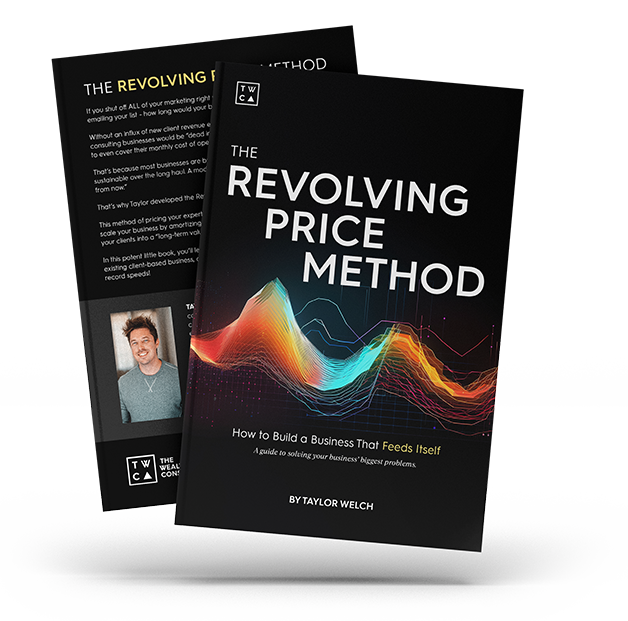Where Are We Headed?
Running a successful business is hard enough.
Running a successful business in an unfavorable economic cycle? Potentially brutal.
Just ask anyone who was trying to grow a business in 2008, the year that kicked off what would become the worst financial crisis globally since the Great Depression in the 1930s.
How bad was it? Well, for those of you who don’t remember…
- About 1.8 million small businesses were forced to close in about 2 years
- Unemployment rose from 5% (pre-recession) to 10% by October 2009 (the highest it had been since 1982)
- Over 8 million homes were foreclosed upon
- $17 trillion in household wealth essentially evaporated
Yeah. Not a fun time if you make a living selling things to people.
However, the point of this article isn’t to talk about the 2008 financial crisis. It’s to talk about what’s happening in the economy right now, and how it is impacting business owners today.
If you watch what’s happening closely, then you know that we are on a trajectory for some turbulent economic times.
What does that mean for expert business owners? How can you weather the storm?
Let’s talk about it.
The Current State – The Fed, Rates, and What It All Means
We’ll start with a very basic breakdown of where we are economically. This will not be an economics masterclass – but rather a quick primer.
The Federal Reserve is essentially the central banking “system” for the United States. You normally hear their name mentioned in connection to two things:
- Inflation – When the amount of money in circulation goes up but supply of goods and services doesn’t increase to support it
- Interest Rates – A tool for controlling the “cost” of borrowing money
Interest rates and inflation are considered to have an inverse correlation.
When the central bank raises interest rates, thus raising the cost of borrowing money (i.e. – it becomes way more expensive to buy a house), it slows down spending. Slowing down spending usually lowers demand (because there are less people in a position to buy).
The combination of decreased spending and decreased demand is usually enough to pull inflation downward.
Now – let’s talk about where the economic situation is currently.
You can’t really talk about the current economic situation without talking about Covid-19. When the Covid crisis kicked into high gear early in 2020, there was an almost instantaneous ripple effect in the economy.
People stayed home. Businesses cut costs (preemptively). Layoffs began happening.
It looked like we were on the verge of an economic crisis.
That’s when the stimulus programs kicked in. The government pumped so much money into the economy to stave off a drastic drop in spending, that they inadvertently created a new problem. Covid didn’t damage the economy in the way it was predicted to – and things began to bounce back. The multi-part stimulus checks led to a dramatic increase in spending.
Lots of money in circulation. Not enough increase in supply.
Cue the inflation.
And inflation can be a vicious cycle.
Now, the Fed keeps saying that they will drop the interest rates. But they can’t – until inflation is under control.
We are, in essence, in a “squeeze.” A tenuous period for the economy that is loaded with uncertainty. Most of the population is feeling the price increases – and willingness to spend on coaching and consulting is decreasing.
For you, the expert business owner, that means that the cost of acquisition is increasing and the length of the conversion cycle is increasing.
However, there are several things that you can build into your business right now to start combating this.
Price, Supply, and Multiplying Offerings
The first and most basic tool at your disposal for combating a volatile economy is your pricing.
There are three things that price does (according to economist Thomas Sowell in his book “Basic Economics”):
- Communicates scarcity/supply
- Incentivizes behavior in the market
- Regulates availability (or access) to a good or service
Our CEO (Taylor Welch) and Client Services Director (Mike Walker) dive deeper into these three powers of price in a recent podcast on this topic. You can find that here.
Here’s why this matters to you. You want to price your services in a way that accomplishes two out of the three things IN YOUR FAVOR. You want your price to incentivize the behavior of your market (get them buying), while also regulating availability.
You, as an expert, have a finite amount of time available to you. You need to be able to transfer your knowledge and skills to others, but you want to make sure that you have the requisite TIME to do it. Pricing allows you to “thin the herd” within your market from people who want what you provide, to people who both want and can afford what you provide.
In an economic crunch, where people are more hesitant to spend, and are slowing down their buying process, the most practical way to use pricing in your favor is to split up your offerings.
If all you have is one high ticket offer that you sell for $15,000 (for example), you might consider splitting off a piece of that offer at a lower, more accessible cost. Then, creating a “tiered” ascension system that allows prospects to work their way upward to your $15,000 offer over time – often, by allowing them to use the price they already paid for the lower tier as a deposit toward enrollment in the higher tier program. Often, you’ll hear this referred to in the space as a “mid-ticket” offer.
If you’ve been around the internet marketing world for a while you’ll likely recognize this as “value ladder” pricing. Low ticket products on the front that teach pieces of your IP at affordable costs to pull in prospects. Mid-tickets to collect revenue at middle of funnel and set stage for your higher level programs. High ticket offers to drive new revenue and growth.
Sustainability IN THE RECIPE
Breaking up your offerings into tiers and giving multiple ways for prospects at different levels to engage with your teach WHILE collecting revenue is one piece of the puzzle.
The other is more foundational.
You can build certain frameworks into your offer that add stability to your business regardless of the economy.
One such model that we teach to our clients, is called the Revolving Price Method. Installing this method into your existing offer is one of the absolute best ways to “bake” stability into your business, by turning each of your clients into long-term revenue. We teach the basics of the model in our brand new book (you can pick it up for $3 here).
Of course, this model will require that you firm up your client experience and be confident that you are selling to the right people. More on that here.
Rolling With the Changes – and Thriving
Economic hardships do not have to spell disaster for your business.
Not by a long shot.
All that is required is that you learn to be agile – to read what’s happening and to adjust your approach accordingly.
This is where being a small business can actually serve you rather than being a hinderance. Large businesses are like gigantic cruise ships – they can adjust course and turn. But the effort and time required is 10X that of a smaller business with an energetic and informed leader.
Don’t let constrictions in the market trigger a “fear response.”
Instead, do the following things:
- Recognize what’s happening – understand the season
- Look at your offer and assess where you have the most price elasticity
- Consider ways to break up your offers and turn one offer into several with varying points of entry based on price
- Start installing potentially life-saving systems and models into your business NOW… before economic situations worsen (consider these models an insurance policy for your business)
With proper thinking, you can turn even the worst of financial circumstances into a “win.”

One of the Best Ways to Protect Your Business – Baking Stability Into Your Offer!
The Revolving Price Method is, pound-for-pound, the most effective model for sustaining growth inside of an expert business… WITHOUT going overboard on client acquisition and driving up the “cost” of the business. If you want to grow, unbothered by the economy or rising acquisition costs, you need to learn this model.

